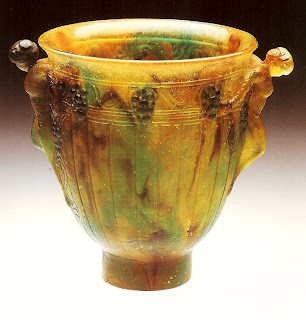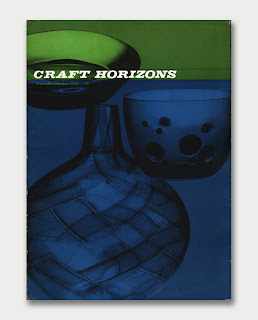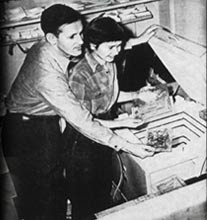>
2012 marks the 50th Anniversary of the American Studio Glass Movement, and its celebration will be marked with many events and exhibitions. The focus of the anniversary celebrations will mainly be on hot-glass and taking glass making from the factory to the artist’s studio, using the 1962 Toledo glass workshop as the birth date.

Toledo glass workshop in the spring of 1962
Horizontal/Vertical, 1974. Harvey Littleton. Chazen Museum of Art, Madison, Wisconsin
Early Fused Glass
While the precise origins of glass fusing techniques are not known with certainty, there is archeological evidence that the Egyptians were familiar with basic techniques. Some historians argue that the earliest fusing techniques were first developed by the Romans, who were much more prolific glassworkers. Fusing was the primary method of making small glass objects for approximately 2,000 years, until the development of the glass blowpipe largely replaced fusing due to its greater efficiency and utility.





___________________________________________


Michael and Francis Higgins’ were a husband-and-wife team who produced commercial tableware for Dearborn Glass.Both studied at the Chicago Institute of Design. The couple individually created unique hinged boxes, mobiles, flat panels and vessel forms that were distinguished by bold geometric patterns and innovative techniques that retain their freshness with their delicate designs.


___________________________________________

Archangel, 1956. Erdis Eckhardt
cast glass. Corning Museum of Glass

Uriel, 1968. Erdis Eckhardt
cast glass. Corning Museum of Glass


1944 Craft Horizons and 2012 American Craft Magazine
Early books about glass offered technical advice, a general history of glass, or the occasional survey of contemporary work. Information about glass was available only in industrial manuals, amongst them “The Art of Glassmaking” (1947) by Sydney Waugh, a designer for Corning Glass. Waugh’s book included declarations that glass could only be made in large factories.
California artist Kay Kinney studied glazes and ceramics and later experimented with glass in the early 1960’s. Kinney’s book “Glass Craft: Designing, Forming, Decoration” (1962) was written long before the “fusing-compatible” era. Her book has information about mold-making, fusing and slumping projects utilizing window glass, bottles, and other types of glass.

Kinney’s book was written for glass novices, with simple, straightforward instructions on cutting and fusing.
Click HERE to jump to Part 2 Exploring Technique and Content – the ’60’s, ’70’s & ’80’s
